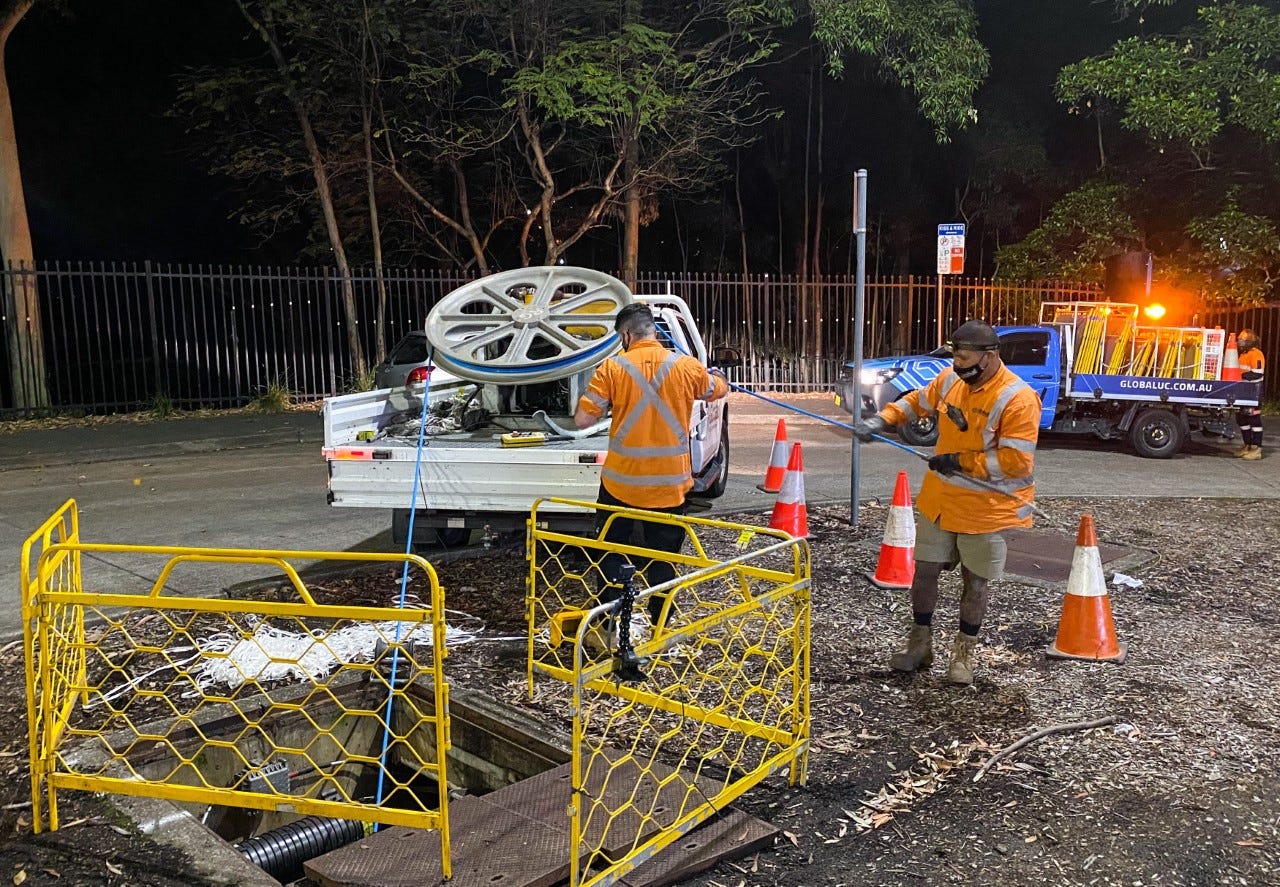NBN FttC upgrade orders are starting at end of May


Aussie Broadband fibre being laid.
The company responsible for the National Broadband Network will open the fibre to the curb (FttC) portion of its Fibre Connect program in May.
The announcement was made by Aussie Broadband stating it was taking part in the program, and has 9,000 eligible customers on FttN and FttC technologies.
"We've been taking part in trials over the past few months, and we're keen to participate in NBN's new fibre upgrade scheme," Aussie Broadband managing director Phil Britt said.
"Eligible FttC customers will be able to apply for the Fibre Connect program from the end of May. To qualify, customers need to be on, or move to, the 250Mbps plan or higher.
"Customers must stay on the higher-speed plan for a minimum of 12 months, unless they're facing financial hardship, or NBN may charge a downgrade fee of AU$200. This applies to both FTTN and FTTC upgrades."
Britt added that the upgrade program was good news for telcos, as higher speeds meant higher margins.
Last week, telco called on NBN to leave its 50/20Mbps plan at the same price point but increase inclusions, dropping the price on 100/20Mbps plans to AU$50, and having each of 100/40Mbps, 250/25Mbps, and 1000/50Mbps plans be at AU$55, AU$60, and AU$65 respectively.
"We have seen the success of long-term price changes -- not temporary discounts -- in changing the take-up of plans," Britt said last week.
"For example, the Focus on 50 program increased the uptake of the 50/20 (and higher) tier from around 16% to 70%, and the launch of high-speed tiers in May 2020 has almost doubled the take-up of these services."
In recent answers to Senate Estimates Questions on Notice, NBN said during the Focus on 50 campaign, 25,200 12Mbps lines shifted up to 50Mbps with 89% staying once rebates ended, and 2,800 12Mbps lines moved to 100Mbps with 86% staying. For 25Mbps lines, 540,000 shifted to 50Mbps and 87% stayed, while 5,600 services moved to 100Mbps and 4,600 stayed.
For 100Mbps lines, 145,000 shifted to 250Mbps and 64% stayed.
The company also added that upstream traffic was up 20% to 25% year-on-year for February, and overall downstream traffic was 10% to 15% higher.
Retailers currently supporting FttN and FttC upgrades are Telstra, Uniti, Superloop, Southern Phone, Leaptel, Launtel, Harbour, Exetel, Aussie Broadband, AGL, and Activ8me.
The first batch of 50,000 premises where parts of eligible suburbs can upgrade are:
New South Wales: Aberglasslyn, Bella Vista, Cameron Park, Canley Vale, Castle Hill, Cherrybrook, Chipping Norton, Croydon, Croydon Park, Darlinghurst, Edgeworth, Erina, Glenhaven, Green Valley, Hunterview, Kingswood, Kurnell, Lyndhurst, Melrose Park, Norwest, Pleasure Point, Rutherford, Singleton Heights, St Albans, St Clair, Terrigal, Thornton, Villawood, Voyager Point, Wattle Grove, West Pennant Hills, and Woodlands.
Victoria: Bayswater, Bayswater North, Braybrook, Cranborne North, Hampton Park, Lynbrook, Narre Warren, Rowville, Sunshine, and Sunshine North.
Queensland: Burleigh Waters, Gilston, Highland Park, Mudgeeraba, Robina, Varsity Lakes, and Worongary.
South Australia: Ascot Park, Athol Park, Bowden, Burton, Clovelly Park, Dudley Park, Edwardstown, Ethelton, Greenwith, Mawson Lakes, Mitchell Park, Parafield Gardens, Paralowie, Renown Park, Semaphore, Semaphore Park, Semaphore South, South Plympton, West Lakes, West Lakes Shore, and Woodville North.
Western Australia: Alexander Heights, Beckenham, Doubleview, Gwelup, Innaloo, Karrinyup, Langford, Marangaroo, and Thornlie.
NBN said earlier this week it is looking to add 60,000 FttN lines each month, and is targeting 230,000 eligible lines by mid-year, and 600,000 by year end. At the end of 2023, NBN says it will have up to two million premises eligible.
Related Coverage
- ACMA orders Optus and TPG to refund AU$6.5m for under-delivering internet speeds
- NBN opens up first suburbs for FttN to FttP upgrade orders
- NBN to spend AU$750 million upgrading fixed wireless to be millimetre-wave 5G capable
- NBN fibre alternatives cannot keep up: ACCC
- NBN carries less purchased bandwidth as Focus on Fast promotion ends
- ACCC chair says NBN should be treated as sunk cost in any efforts to recoup spend